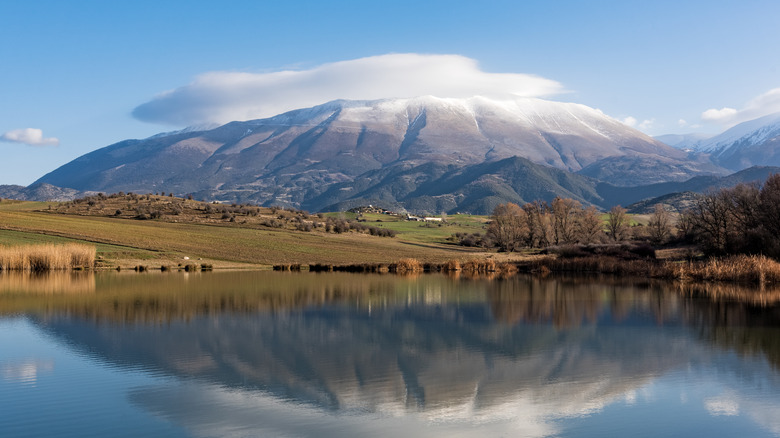Does Mount Olympus Actually Exist?
In the mythology of Ancient Greece, Mount Olympus was the home of the primary 12 gods, the deities known as Olympians (via Greek Mythology). Mount Olympus plays a role in many Greek myths, from the Muses to the origin of thunder (via Greek Boston), but it's also a real place — and not even that hard of a hike!
Though peaks throughout the world, including several in Greece, Cyprus, and Turkey, have been called Mount Olympus through the years, the peak most closely associated with the Mount Olympus of myth is in northwest Greece, on the border of the historical administrative regions Macedonia and Thessaly, according to Britannica. Mytikas, the mountain's highest peak, is 9,570 feet, making it the tallest mountain in all of Greece, with its upper features often concealed by clouds — perfect for hiding the home of the gods. Legend holds that it never storms at the top of Olympus, and instead the air consists of calm and cloudless aither — a myth belied by the fact the peaks are capped with snow.
A home for the Olympians
The 12 Olympians make up some, but not all, of Ancient Greece's most important gods: Zeus, Poseidon, Hera, Demeter, Ares, Hephaestus, Hermes, Hephaestus, Artemis, Apollo, Aphrodite, and either Hestia or Dionysus, depending on who's doing the telling, according to Greek Mythology. Other notable deities made their home elsewhere — Hades and Persephone lived in the underworld, for instance. Legend says these gods and goddesses made their home on Mount Olympus after overthrowing their predecessor deities, the Titans.
In the millennia since Ancient Greek paganism was practiced in the foothills of Olympus, the mountain has remained a beautiful natural attraction, becoming Greece's first national park in 1938 (via Lonely Planet). The mountain was first scaled in 1913 and today its trails can largely be completed in one or two days, according to the Sacred Land Film Project. And though archaeologists have not found any evidence the ancient gods lived up on Mytikas, the area surrounding the peaks has been a wellspring of historical finds, including ancient pagan cities and Byzantine-era monasteries.

